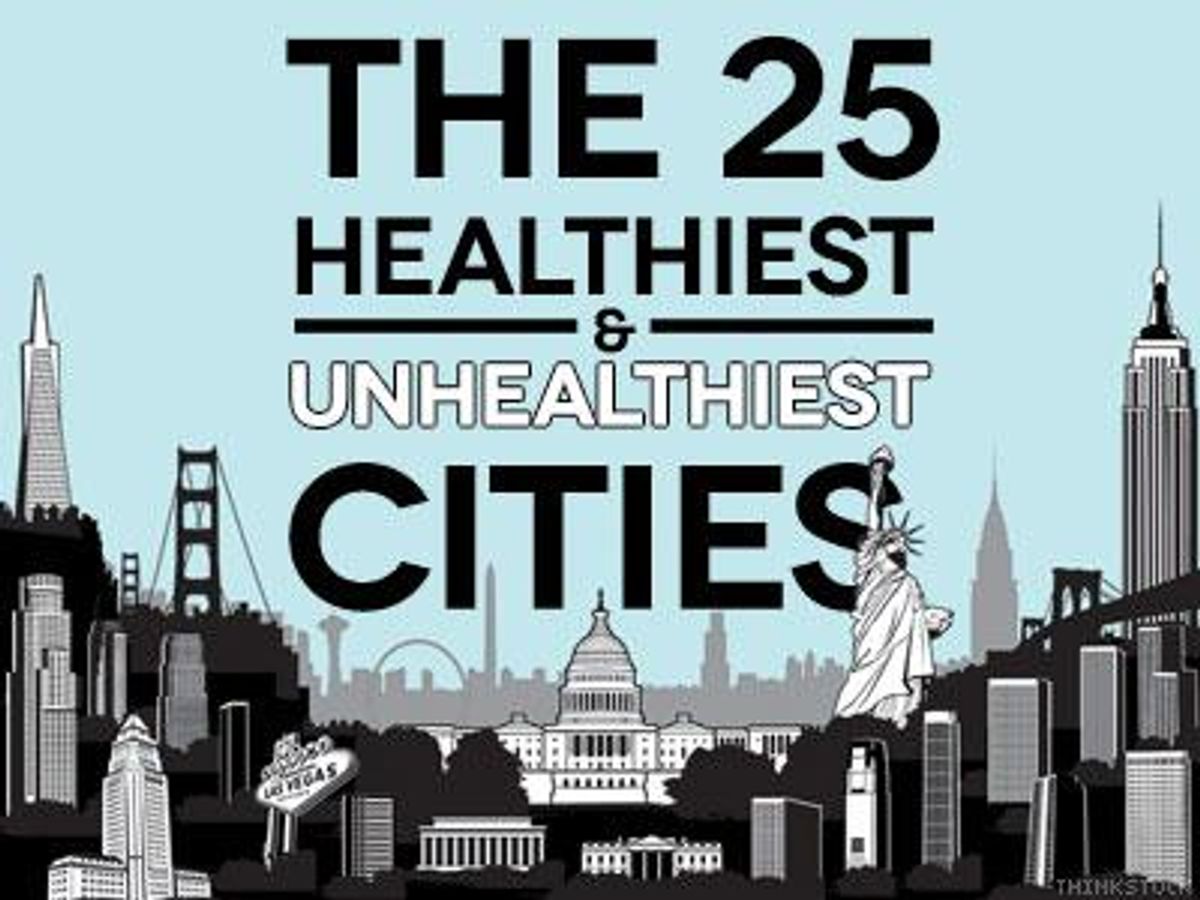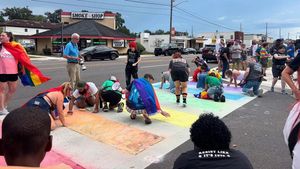With all the gym bunnies in West Hollywood, the vegetarian lesbians in Silverlake and the pampered celebrities looking down on the city from the hills, you’d think Los Angeles would be among America’s healthiest cities. Instead BetterDoctor.com — a free consumer doctor-finding healthcare site – ranked L.A. as the ninth least healthy city in in the country.
There are plenty of other surprises on the list, including who topped the healthiest list:

See the rest of the Top 25 Healthiest Cities on the next page and find out which are the least healthy...
The Top 25 Healthiest Cities
1: Boston, MA (74.5)
2: Minneapolis, MN (73.6)
3: Washington, DC (72.6)
4: San Francisco, CA (66.4)
5: Hartford, CT (62.7)
6: Pittsburgh, PA (60.1)
7: San Jose, CA (58.6)
8: Salt Lake City, UT (58.5)
9: Seattle, WA (57.7)
10: Cincinnati, OH (57.6)
11: Portland, OR (56.7)
12: Denver, CO (56.6)
13: Sacramento, CA (56.6)
14: Atlanta, GA (55.9)
15: San Diego, CA (55.3)
16: Baltimore, MD (55.0)
17: St. Louis, MO (54.7)
18: Austin, TX (53.9)
19: Raleigh, NC (52.7)
20: Providence, RI (51.3)
21: Buffalo, NY (50.3)
22: Richmond, VA (48.6)
23: Chicago, IL (48.4)
24: New York, NY (47.7)
25: Philadelphia, PA (44.0)
(NOTE: The ranking numbers are out of a total possible score of 100, with 100 being the best.)

To create the Healthy Cities Index, the site evaluated the 50 largest cities across the U.S., based on important health criteria like exercise rates, percentage of highly rated doctors, and the number of residents with health insurance. The group used the index to urge people to “take control of your health,” but they also acknowledged improving one’s health “may be easier in some locations than in others. Doctor access, doctor quality, recreational opportunities and health insurance options all vary widely from city to city.”
Using data obtained from the American Fitness Index,(AFI) National Center for Health Statistics, U.S. Census and BetterDoctor's own database, the organization establish a 100-point composite index to answer three questions:
1. Are residents fit and healthy? To determine this, BetterDoctor relied on stats from the American Fitness Index that is comprised of variables, including exercise rates, eating habits, chronic health problems, disease rates, and access to parks and recreational activities. This data attributed to 40 percent of the overall scores.
2. Is medical care accessible and high-quality? To answer this question, BetterDoctor turned to their in-house algorithm to view the percentage of doctors in the city that are highly rated, as well as the number of primary physicians per 100,000 residents. The percentage of doctors that are highly rated was weighed as 20 percent of the total score.
3. Do residents have health insurance? Knowing that health insurance can determine whether a patient has access to medical care, BetterDoctor included the percentage of residents with health coverage. The number of residents with health insurance at was valued as 20 percent of the final score. (BetterDoctors adds that AFI scores and health insurance access were calculated by metro area, while doctor access and ratings were calculated at a city level.)
The fact that many of the least healthy cities are in America's Deep South is certainly no surprise to health experts and HIV advocates. (Learn why, and what impact that has on people living with HIV in the South, in our special report.)
But not everything about these rankings seemed as obvious. In fact they raise a number of questions. Who is being counted among a city’s residents? Although the U.S. Census does include unregistered citizens and those who don’t live in what are traditionally called “homes,” activists argue that it regularly misses swaths of U.S. residents.
As anyone who lives in the greater L.A. area knows, L.A. actually refers to the different things: the greater metropolitan area, the 80 or so different districts and neighborhoods who merge into L.A., and a region that includes a multitude of other cities that are part of LA county and are often called L.A. but are really not technically L.A. So Angelinos might wonder which cities are (or are not) included the numbers for Los Angeles?
Similarly, stats change dramatically when one limits their search parameters to San Francisco versus includeing the entire San Francisco Bay Area. The difference between two words and four words is the difference between viewing San Francisco as a socioeconomically diverse city or one that is increasingly white and wealthy (and able to afford insurance).
Placing Washington, D.C. as number three and San Francisco as number four on the healthiest cities list is in sharp contrast to HIV Plus magazine’s list of The 25 U.S. Cities With the Highest Rates of HIV Infection — because the capital city has the 5th highest rates of HIV infection in the country. Likewise San Francisco has the 21st highest rates of HIV infection, which seems incongruent with BetterDoctor’s numbers.
So what does all this add up to? If you are moving to a new city and choosing one from anywhere on the map, the BetterDoctor’s listings may help you decide. But as in any other huge decision, you should also consider other sources and ultimately base the answer on your own criteria and ranking systems.











































































